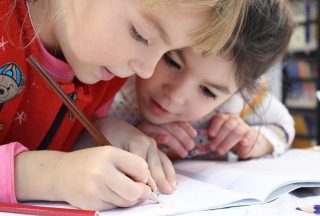Previously, education in Thailand was provided by Buddhist monks, and it was only for the males. However, in modern Thailand, the Thai government is responsible for providing the education.
As per the constitution, free basic education of twelve years is guaranteed by the government. Although most people receive formal education in Thailand, some go for informal education via TV, special radio programs, and more.
In today’s piece, we’ll cover the nursery and primary education system of Thailand. So let’s being from scratch.
Nursery System
Nursery school or Kindergarten starts from the age of 3 and ends at 6. There are a total of three levels to nursery school, KG-1, KG-2 & KG-3. For government schools, education is free for every Thai national. But private or international nursery/kindergarten schools require a tuition fee that could be around 30,000 to 50,000 Baht per semester.
In every nursery class, there are around 10-20 children. One or two teachers govern the children. For English class, the teacher must be an English native speaker. The kindergarten classrooms are equipped with mattresses for a mid-day nap. Furthermore, all the nursery classes are air-conditioned for the comfort and ease of the children. Additionally, every kindergarten class has a white-board and computer.
Nursery or kindergarten classes follow the Thai curriculum that’s published by Thailand’s Ministry of Education. Every level of kindergarten is divided into two semesters. The first semester starts in May and ends in September. The next semester begins in November and stretches up to March.
Registration and Enrollment in the nursery classes start from the month of January. Students and parents go through a short interview and test. Talking about the school days and timings, the children are guided to report at 8:30 am from Monday to Friday. The day-off bell rings at 3:00 pm, and Saturday & Sunday are national holidays.
The government sponsors books and bits of the children in kindergarten. But outside of Bangkok, nursery schools require the parents to pay up to 10,000 baht per year for books & related stuff.
Primary Education
Primary education in Thailand is known as Prathom Suksa. It stretches from Grade 1 to Grade 6. Moreover, the primary system is divided into two tiers, lower elementary & upper elementary. Lower Elementary starts from P1 (Grade 1) and ends on P3 (Grade 3). Whereas Upper Elementary begins from P4 (Grade 4) and finishes on P6 (Grade 6).
Primary schooling in Thailand is compulsory for everyone. The age group of 6 to 11 falls in the category of the Primary system. Note that the learning time of primary students can’t exceed five hours a day.
The primary system in Thailand covers the Thai language, maths, social skills, physical education, and English. If a student fails in the final exams, he/she can retake the test or attend summer school to make it up for the failure.
Uniform is compulsory for every student. The dress code for boys features knee-length dark blue, khaki, or black shorts with a short-sleeve white-open collar shirt. Long-socks and brown/black shoes are also compulsory. Female students are advised to wear a knee-length dark blue or black skirt along with a loose bow-tie and pale white blouse.
Talking about the classroom, they have two sets of double doors and large windows. Windows are always open to keep the classes cool. Each student has an individual desk so they can easily read and write.
The nursery and primary education system of Thailand has drastically changed for good in recent times. As the world is evolving at a rapid pace, Thailand’s education system has got everything well covered. Although some room is still left for improvement, Thai nursery and primary education systems are going on the right track.

